Hanging high above the heads of museum-goers, these life-sized Pteranodon models wowed audiences for decades. They were constructed during the late 1970s by a team of Preparators at the old National Museum of Victoria led by Mike Traynor. Building large models of prehistoric animals was no easy task for the team - especially when working in a small room.
Using only photo references of fossil remains, full scale drawings were first prepared by concept artist George Browning. From these references, preparators used polystyrene foam blocks and clay to sculpt the Pteranodon in three-dimensions. Casts of the model were made with fibreglass for lightweight durability. The Preparators used flocking, small pieces of hemp fibre sprayed over the models, to cover the bodies with a fuzzy texture. This was a relatively new technique at the time. The Pteranodon were then ready for a final coat of paint. From concept art to the finishing touches, this process would have taken upwards of six months to complete.
When finished the Pteranodon were too big to fit through the door of the lab. From their birthplace on the third floor of the museum, the finished models left the building via the fire escape. From there, a system of ropes and pulleys gently lowered the models to ground level. They were then installed in McCoy Hall.
Three models were made but only two remain in the Museums Victoria collections. The third was gifted to the Australian Museum in Sydney for the famous Dinosaurs from China exhibition in 1983. The remaining two models have not gone unchanged in their nearly 40-year life. In 2000 they were repainted for the opening of the new Melbourne Museum. Here they hung in the original dinosaur exhibition in the gallery that now houses Wild.
Contrary to common thought, Pteranodon are not dinosaurs. Rather, Pteranodon belonged to a group of prehistoric flying reptiles called Pterosaurs, meaning 'winged lizard'. The Pterosaurs are the earliest example of flying vertebrates known in the fossil record. While birds have feathers, Pterosaur wings were formed by a thin membrane stretching between their long finger bones and ankles.
Pteranodon were among the largest of the Pterosaurs with a wingspan of up to 7 meters. Unlike earlier Pterosaurs they had large toothless beaks. This characteristic gave them their name, meaning 'winged toothless'. Pteranodon are especially known for their distinctive bony crests projecting from the back of the skull. These crests may have varied in size, shape and colour depending on age, sex, and species. The crests were possibly used for display and courtship, as females had smaller crests than males.
Pteranodon lived during the late Cretaceous period around 85 million years ago, over what is now North America. At the time, North America was divided by a sea called the Western interior seaway. Over a thousand specimens have been found in marine deposits suggesting that Pteranodon may have migrated across seas much like modern albatross do, by soaring for long periods with the help of updrafts.
More Information
-
Keywords
-
Authors
-
Article types

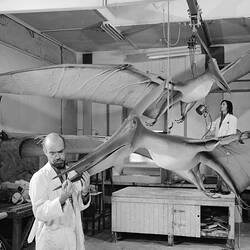
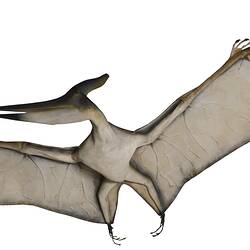
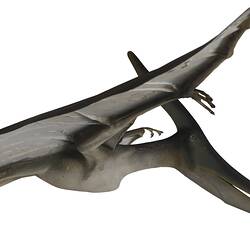
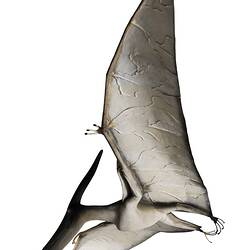
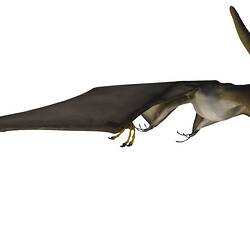
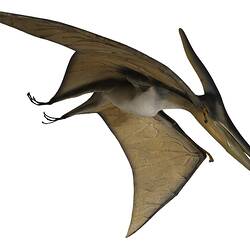
![<em>Tsintaosaurus spinorhinus</em>, hadrosaur dinosaur skeleton, cast (front) and <em>Pteranodon</em> pterosaur skeleton, cast (rear). [P 206976 & P 207267]](/content/media/23/274673-thumbnail.jpg)
![<em>Tsintaosaurus spinorhinus</em>, hadrosaur dinosaur skeleton, cast (front) and <em>Pteranodon</em> pterosaur skeleton, cast (rear). [P 206976 & P 207267]](/content/media/7/276757-thumbnail.jpg)